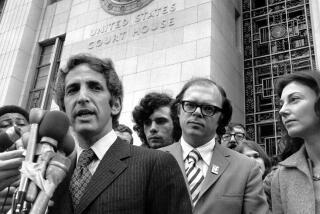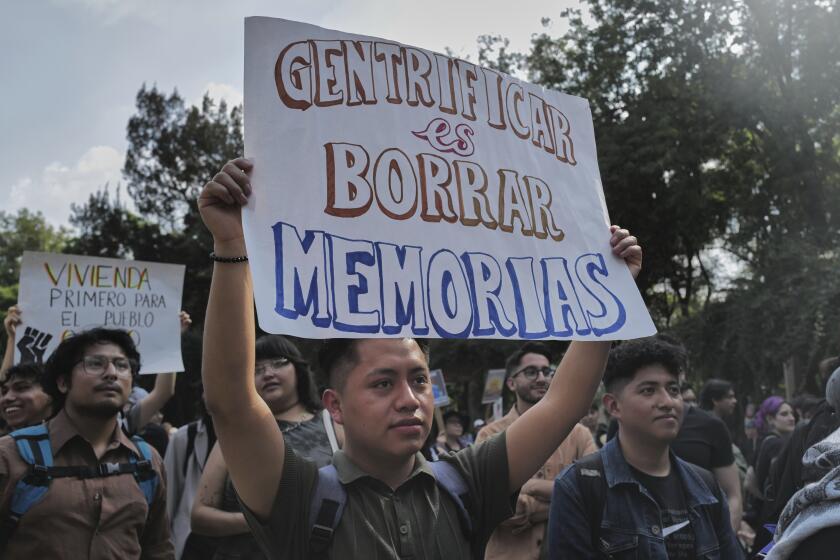Rosenbergs’ Spy Role Overstated, Contact in KGB Says
- Share via
WASHINGTON — Breaking decades of silence on perhaps the most sensational espionage case of the Cold War, a retired Soviet spy says Julius Rosenberg helped organize a 1940s espionage ring for Moscow but was not directly involved in stealing U.S. secrets about the atomic bomb.
Rosenberg and his wife, Ethel, were executed in the Sing Sing electric chair in 1953 for what then-FBI Director J. Edgar Hoover called the “crime of the century,” helping the Soviet Union get its hands on blueprints for the atomic bomb in World War II. The Rosenbergs went to their deaths, the only Americans ever executed for spying, insisting they were innocent.
The new twist in the long-argued story of treachery comes from Alexander Feklisov, 83, a retired KGB officer who has stepped forward with a detailed account of the Rosenbergs’ role.
Feklisov said he held clandestine meetings with Julius Rosenberg in New York from 1943 to 1946 and claims to be the only Soviet intelligence officer still alive with firsthand knowledge of the Rosenberg case.
He told the Washington Post, Cox News Service and the New York Times that Rosenberg passed valuable secrets about U.S. military electronics, but he played only a peripheral role in Soviet atomic espionage. And he said Ethel Rosenberg did not actively spy but probably was aware that her husband was involved.
“Julius was a great sympathizer of the Soviet Union,” Feklisov said. “Julius was a true revolutionary who was willing to sacrifice himself for his beliefs.”
He said neither he nor any other Soviet intelligence agent met Ethel Rosenberg.
“She had nothing to do with this. She was completely innocent,” Feklisov said in an interview with the New York Times in Moscow. The retired KGB officer, who was a behind-the-scenes intermediary between the Soviet spy agency and the White House during the 1962 Cuban missile crisis, also told his story to the Discovery Channel cable television network, which will air a documentary on the case.
The Rosenbergs were convicted of spying and conspiracy mainly on the testimony of Ethel Rosenberg’s brother, David Greenglass, and his wife, Ruth, who were arrested for conspiracy and confessed. Greenglass named Julius Rosenberg as his recruiter and also implicated Rosenberg’s wife, saying his sister had typed espionage material.
Feklisov said Julius Rosenberg recommended David Greenglass to him as a possible recruit.
Feklisov said the key contributions by Julius Rosenberg were secrets about military electronics. He cited Rosenberg’s passing of a fully functioning proximity fuse, a secret World War II U.S. innovation that enables an antiaircraft missile to bring down its target without hitting it.
More to Read
Sign up for Essential California
The most important California stories and recommendations in your inbox every morning.
You may occasionally receive promotional content from the Los Angeles Times.













